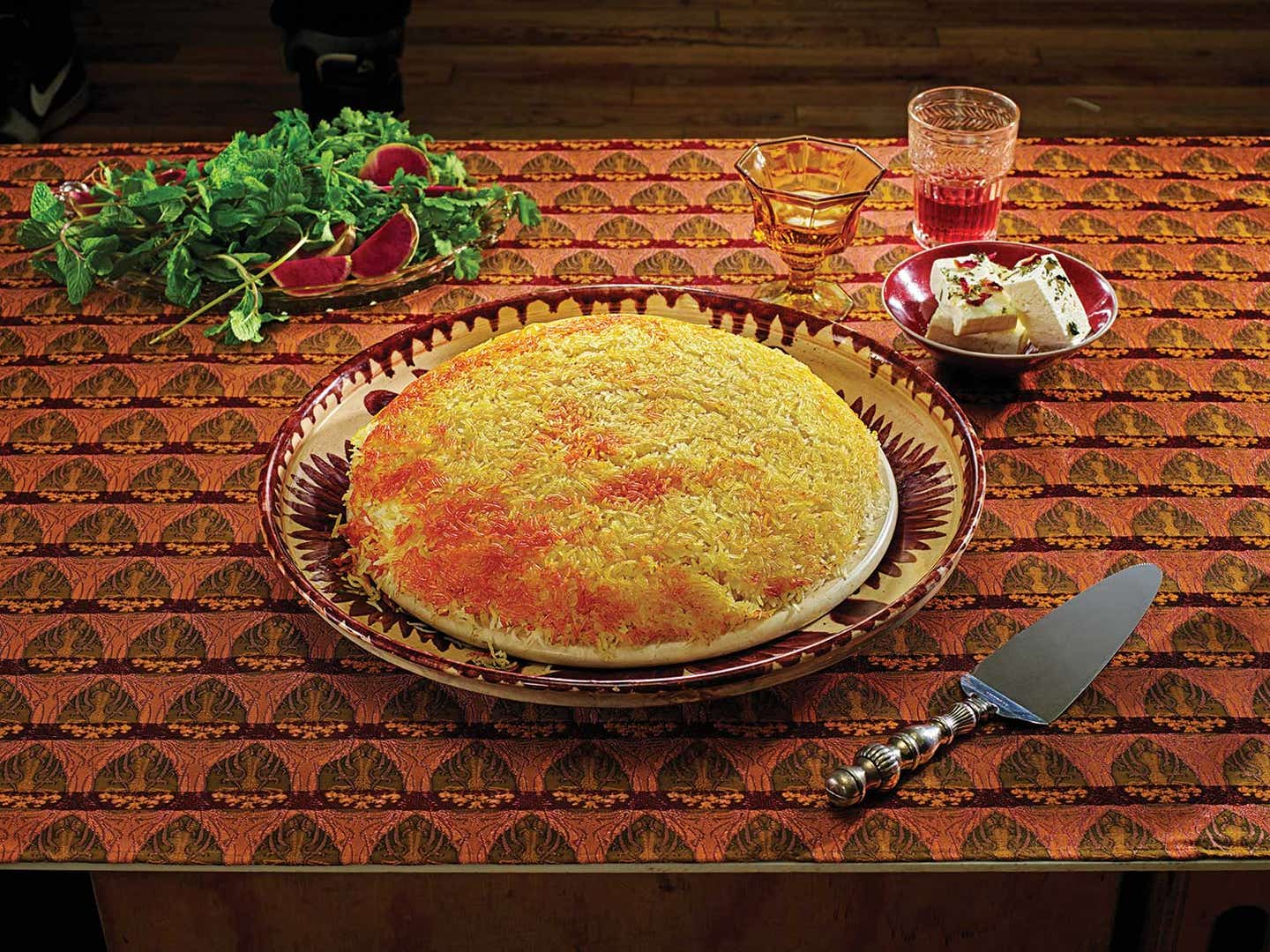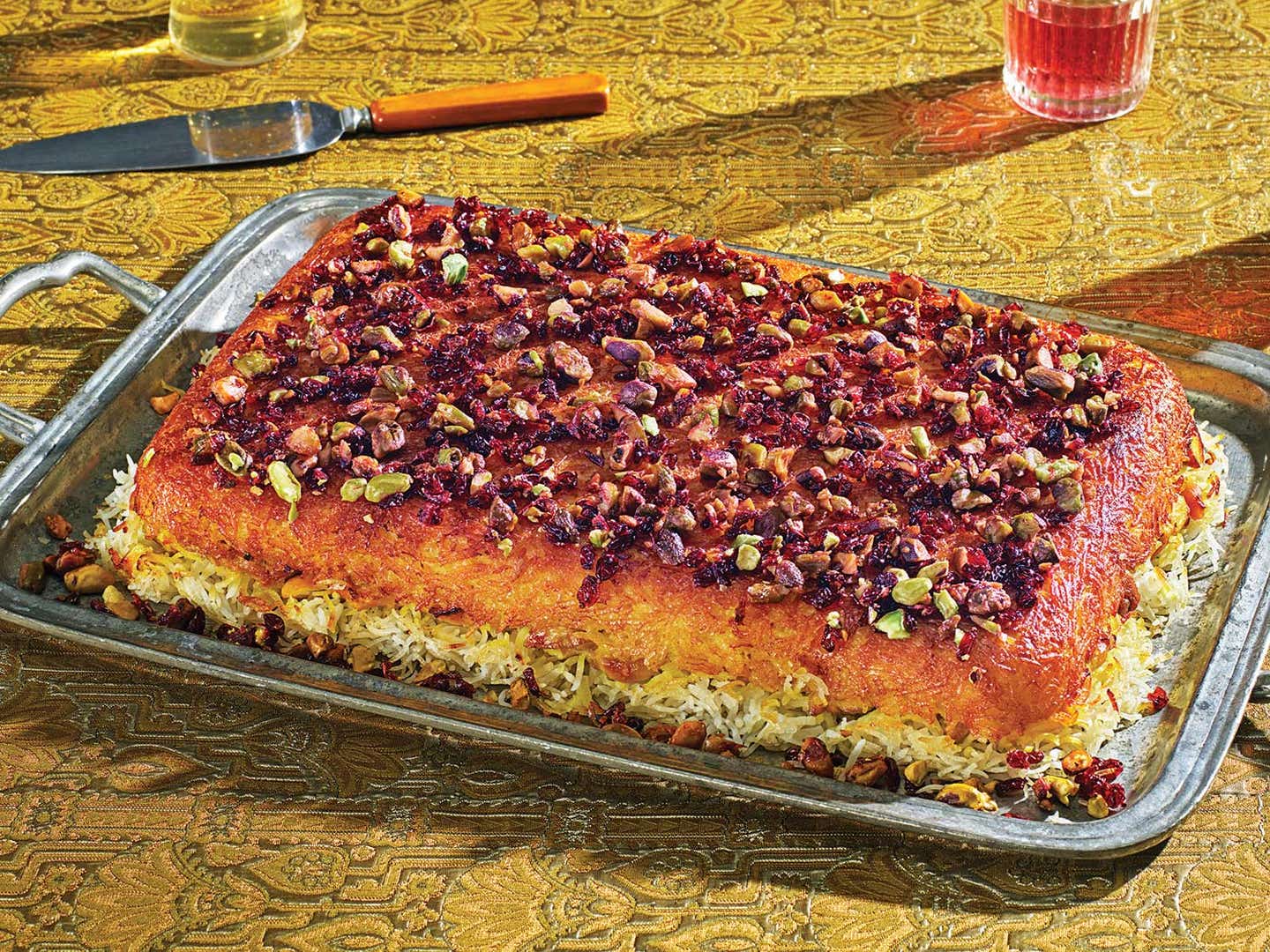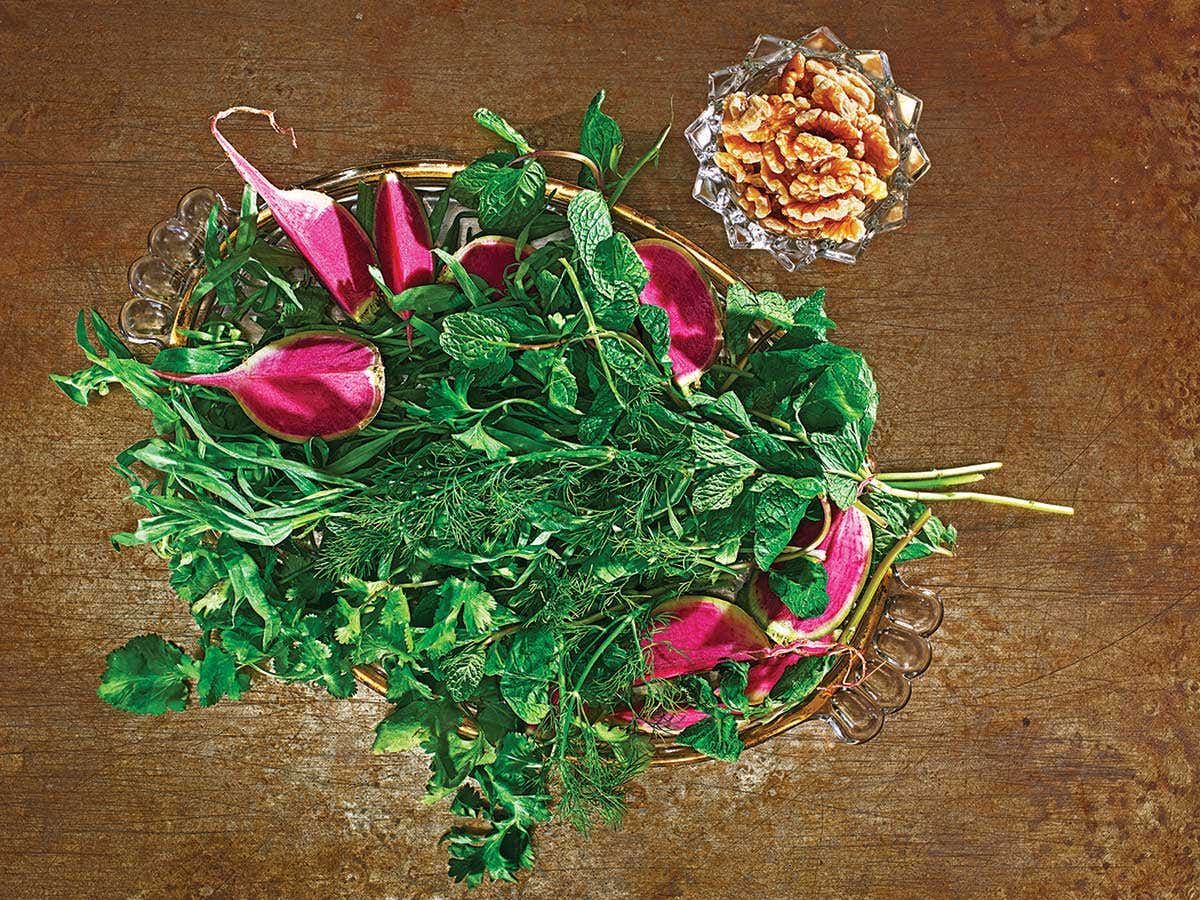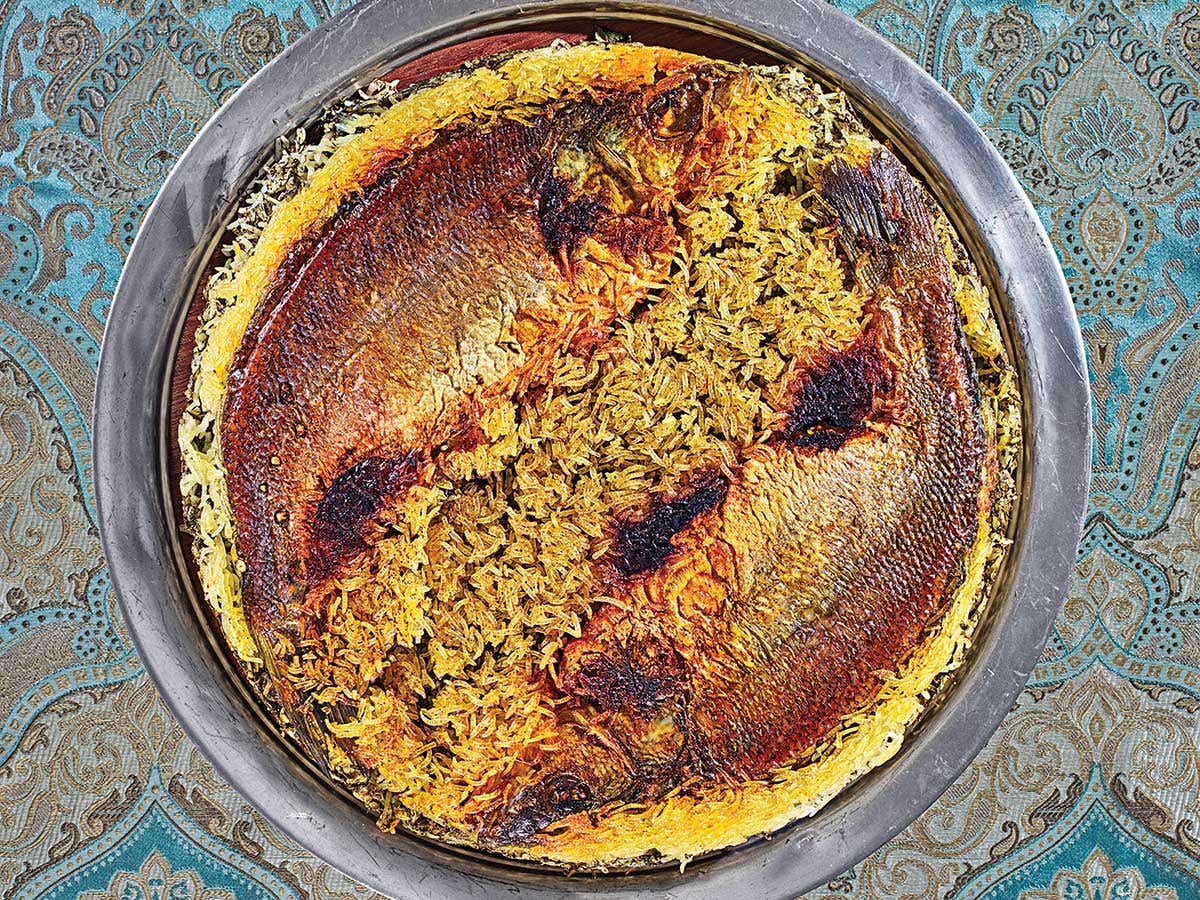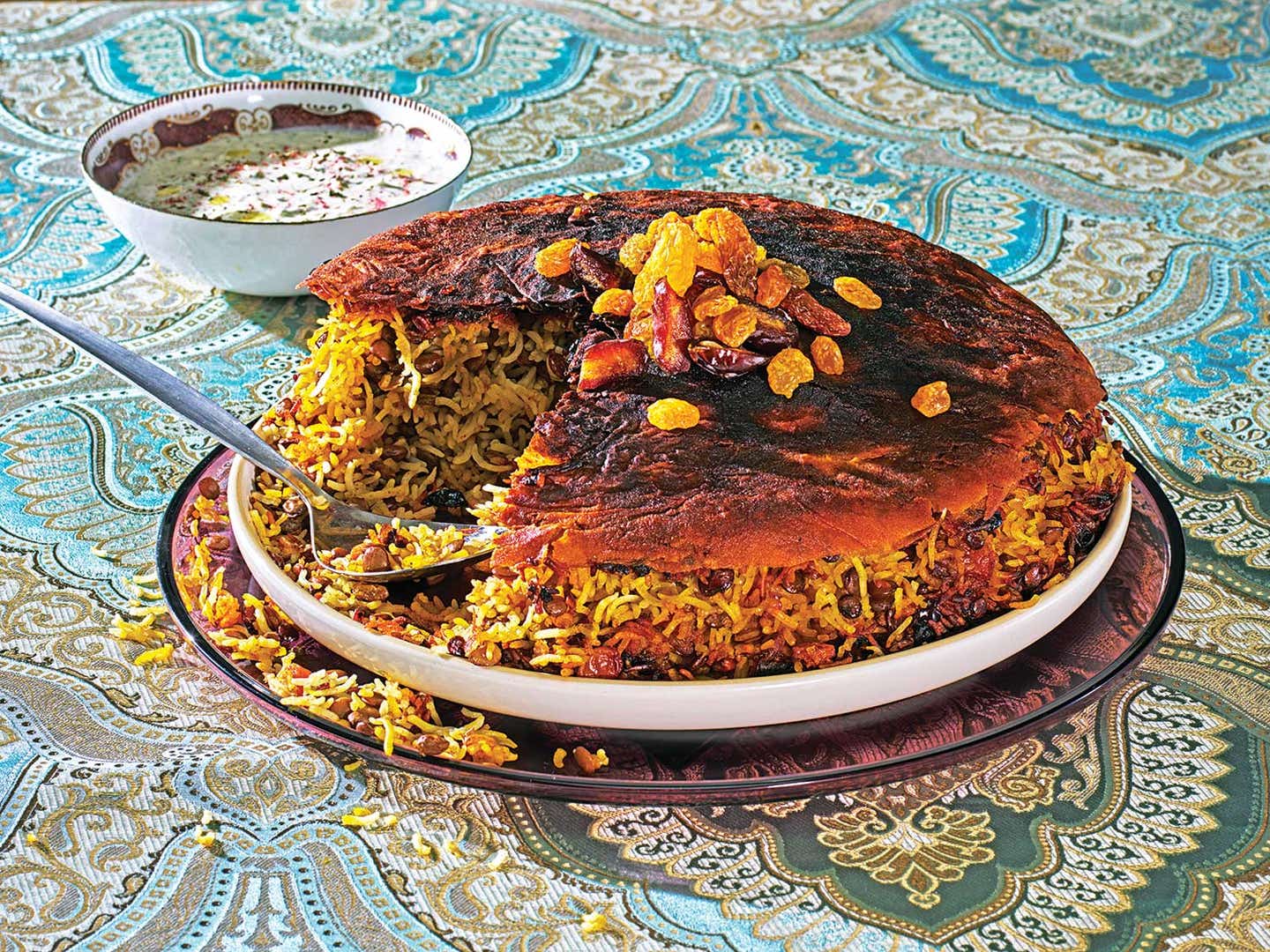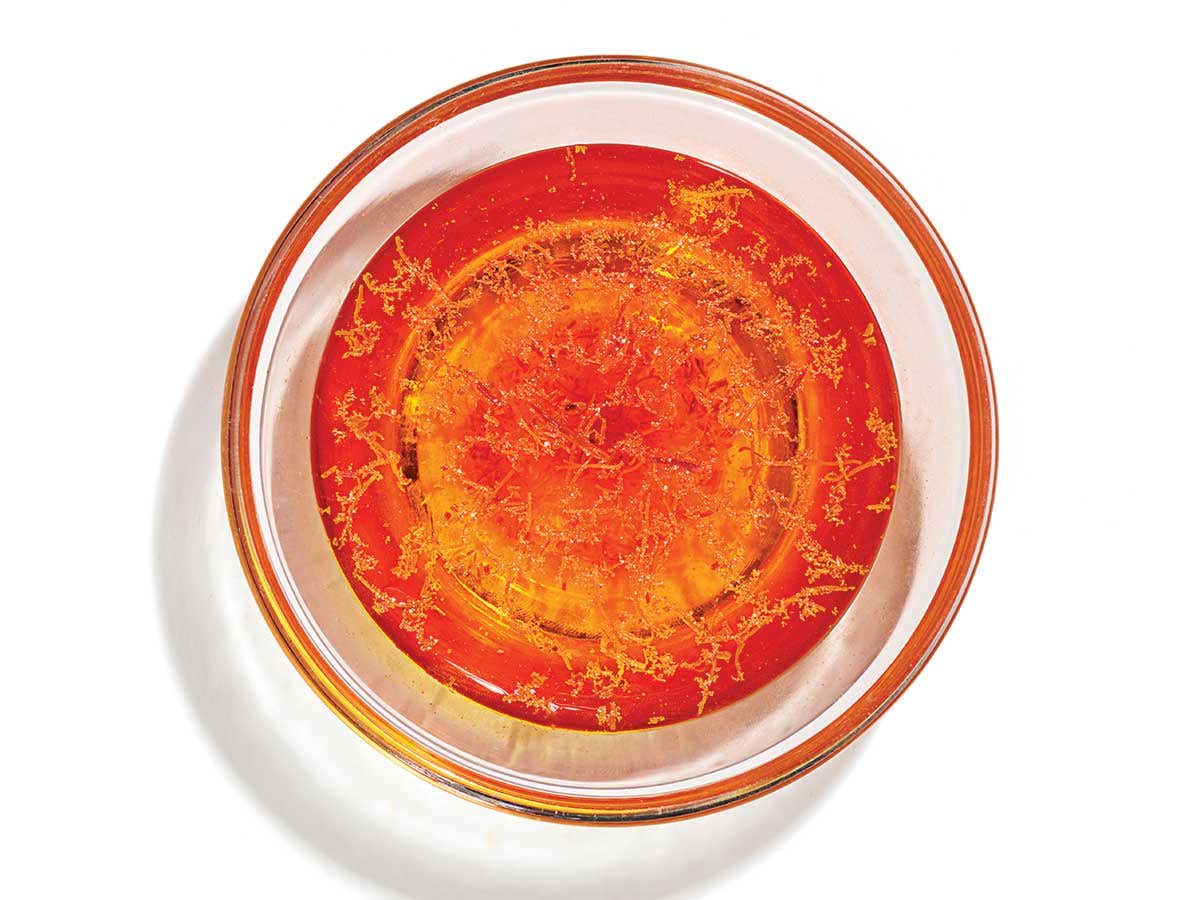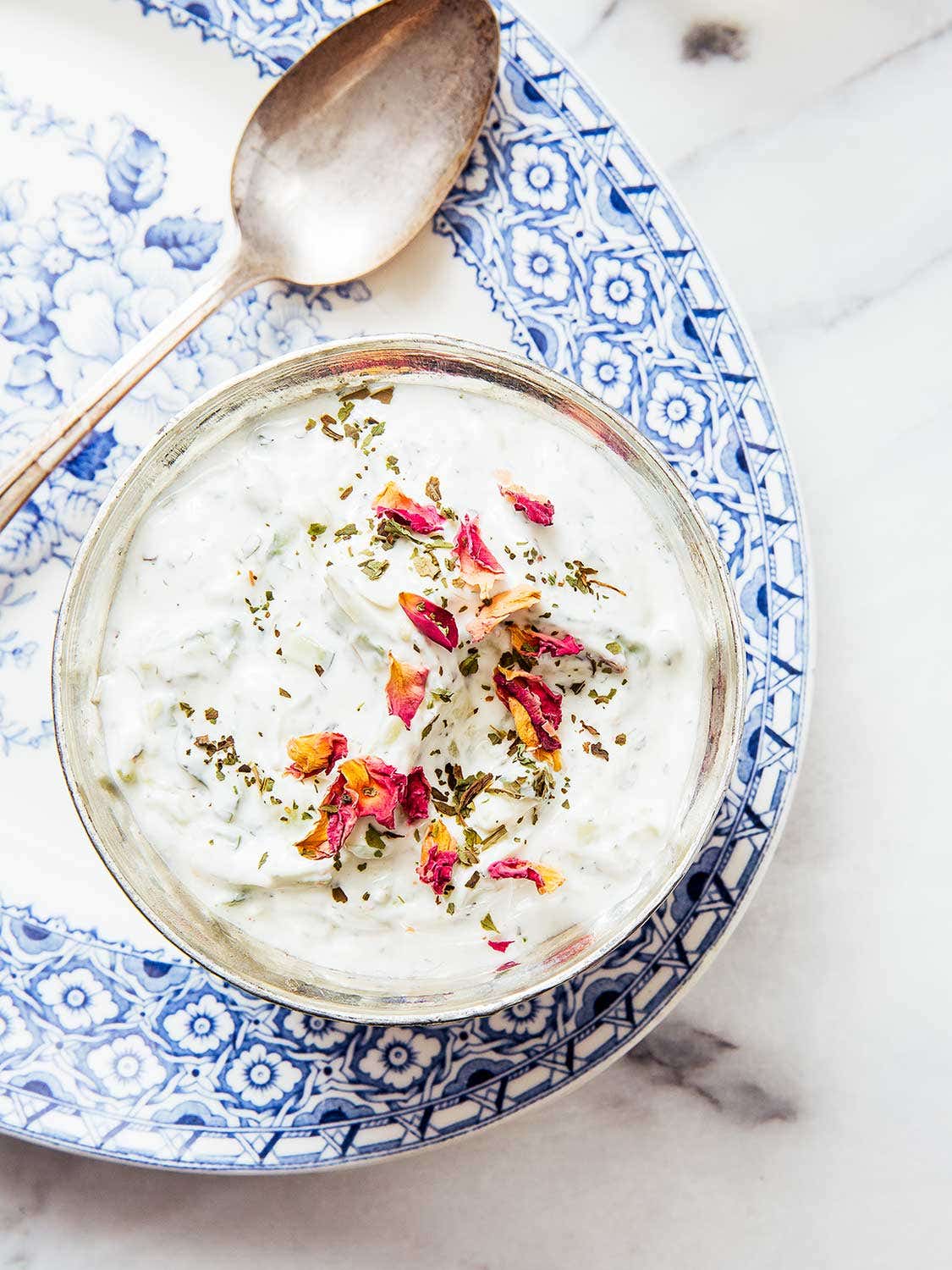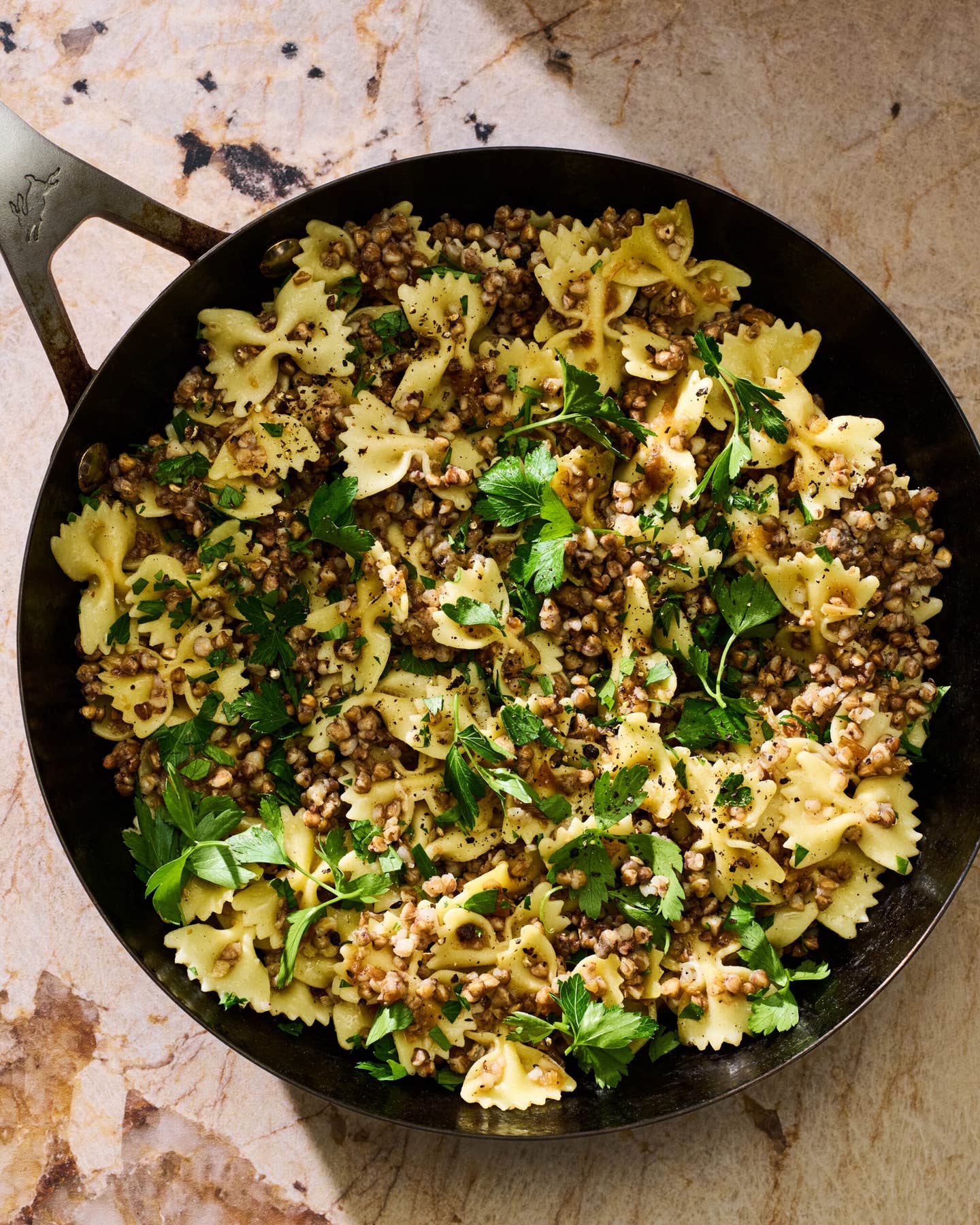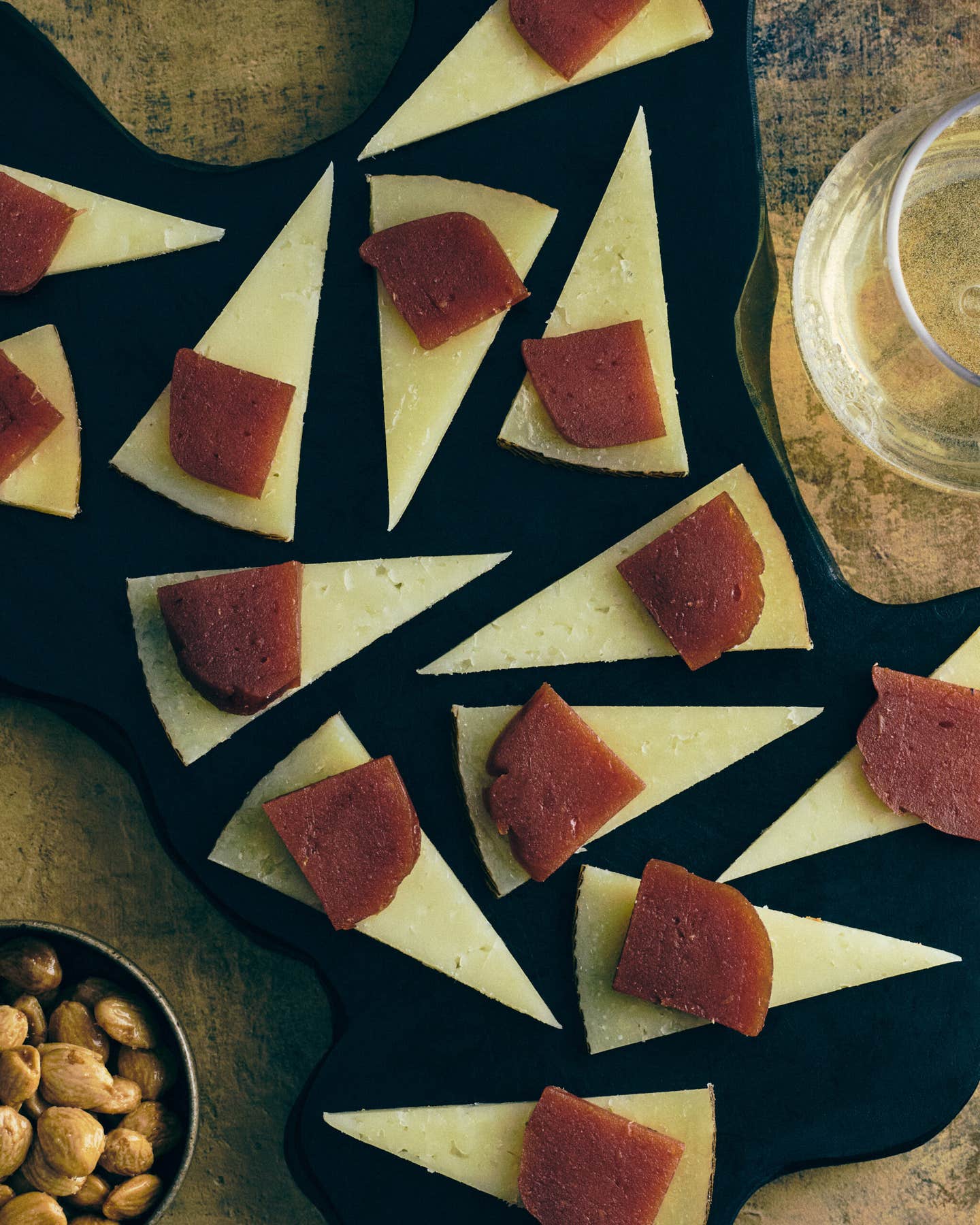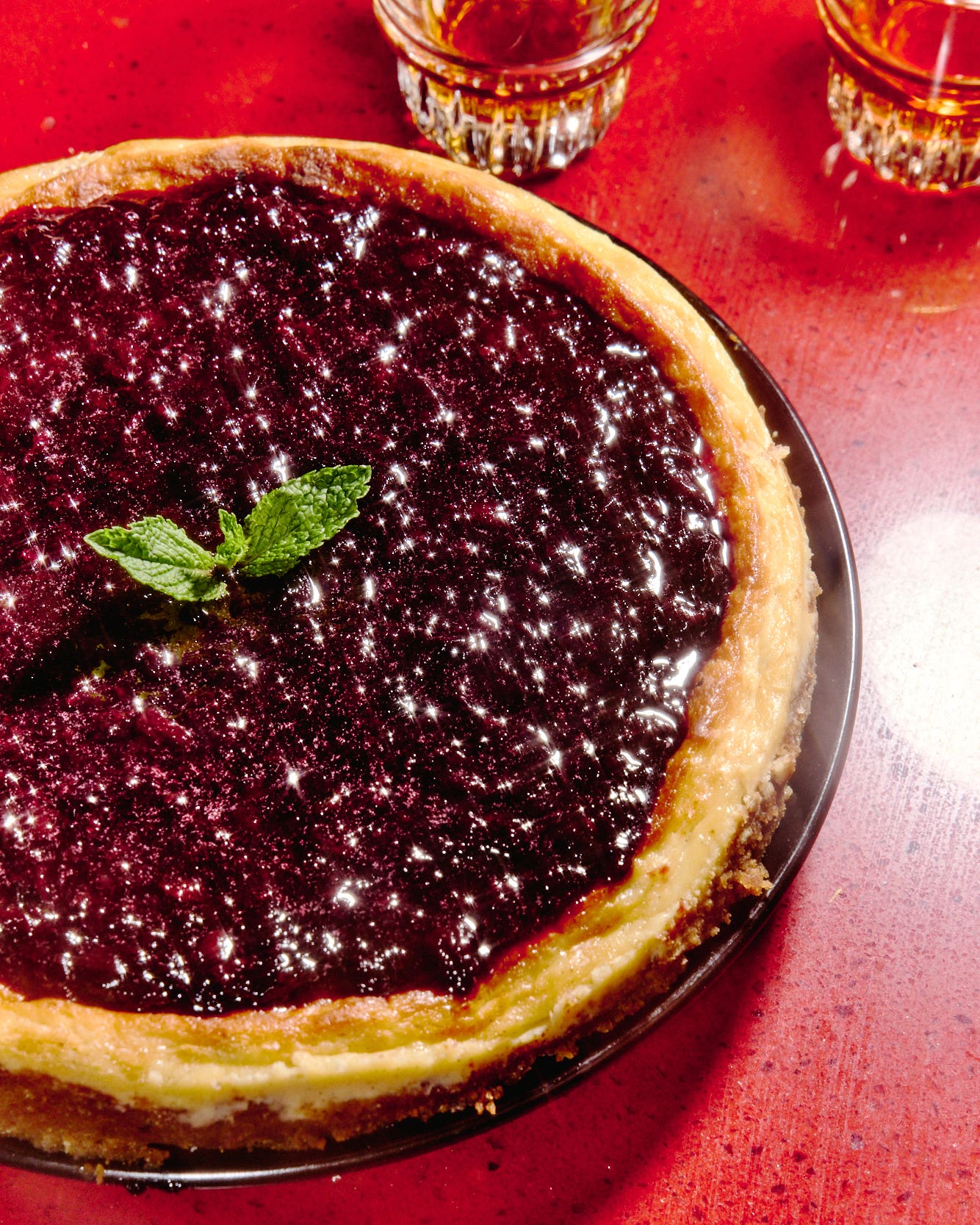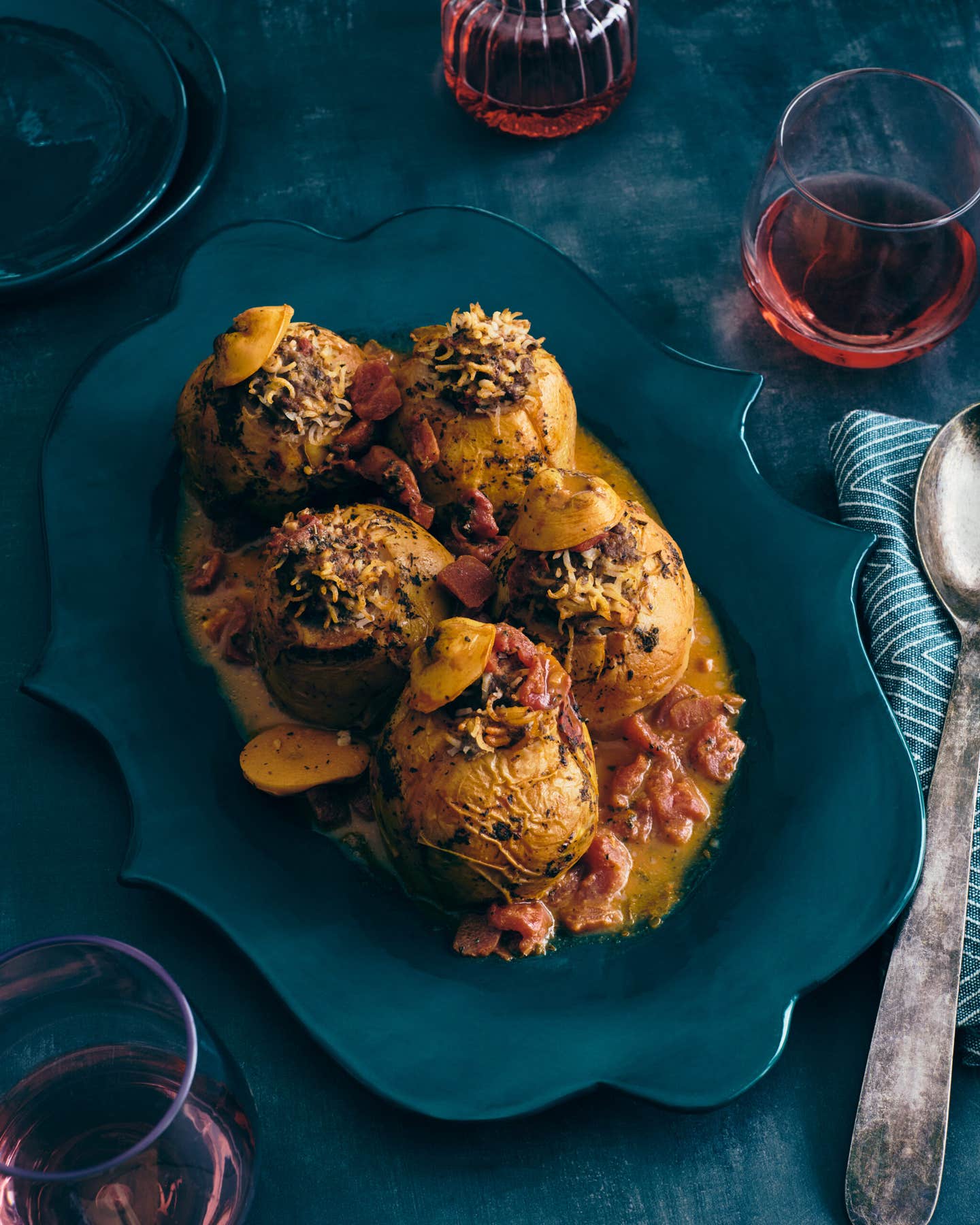How to Perfect the Imperfect Art of Iranian Rice Tahdig
The highly sought-after Iranian crispy rice just takes a little patience, know-how, and luck
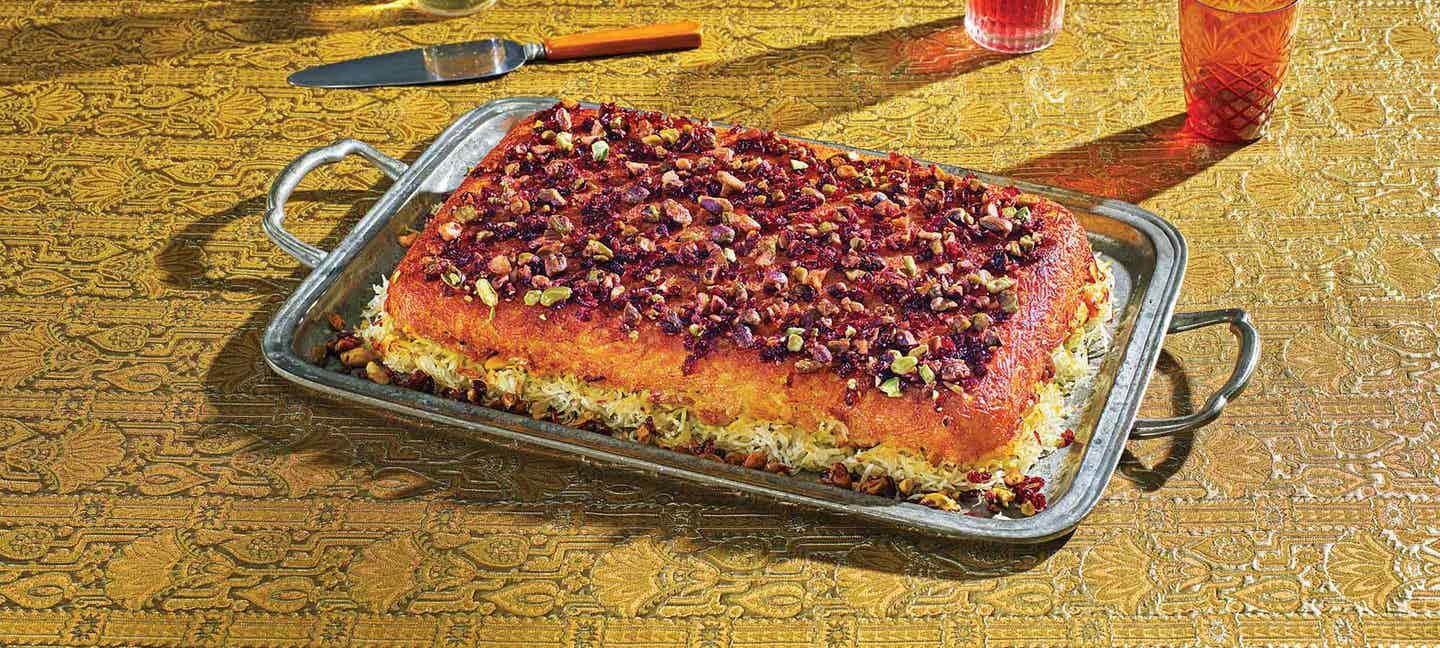
When I first moved out of my childhood home, only a week went by before I found myself craving my mother's cooking. Specifically, I missed Persian rice with tahdig—the prized golden, crispy crust at the bottom of the rice pot.
Rice is the crown jewel of Persian cuisine, and Iranians have elevated its preparation to an art form. Whether we're serving a simple saffron rice or one of the many variations in which it is mixed with other ingredients like meat or lentils, a cook's reputation practically rests on their ability to turn out perfect, fluffy grains and an evenly crisped and bronzed layer.
For all its seeming simplicity, rice with tahdig takes a surprising amount of know-how. Ideally, each grain should remain separate and long when cooked, not sticky or compacted. To achieve this, we cook long-grain rice chelo-style: a two-step method of first par-cooking the rice in boiling water, then steaming it with the addition of fat at the bottom of the pan. It is the steaming step that simultaneously sets a crisp tahdig at the base and finishes cooking the rice grains.
If I had to name one essential tip or tool, using a nonstick, flat-bottomed pot aids critically in allowing the rice to release from the pan in a cohesive mass. Some recipes will even place an ingredient between the rice and the pan, such as a flat lavash bread or an embellishment of thinly sliced potatoes, which have the added benefit of preventing sticking (and providing another layer of flavor).
No one turns out a perfect tahdig every time, but it’s a thrill regardless. And with a little practice, patience, luck, and love, an almost-perfect one is certainly something to celebrate.
Steamed Saffron Rice with Tahdig (Chelo ba Tahdig)
Iranians usually serve chelo ba tahdig with stew, kebabs, or meat dishes. Herbs and alliums, feta, or walnuts often share the table. Get the recipe for Steamed Saffron Rice with Tahdig (Chelo ba Tahdig) »
Fragrant, steamed saffron rice—called chelo—is omnipresent at the Iranian table. Serve it alongside stews, kebabs, and other meat and vegetable dishes. Or use this recipe as a base for all of the more-elaborate variations that follow.
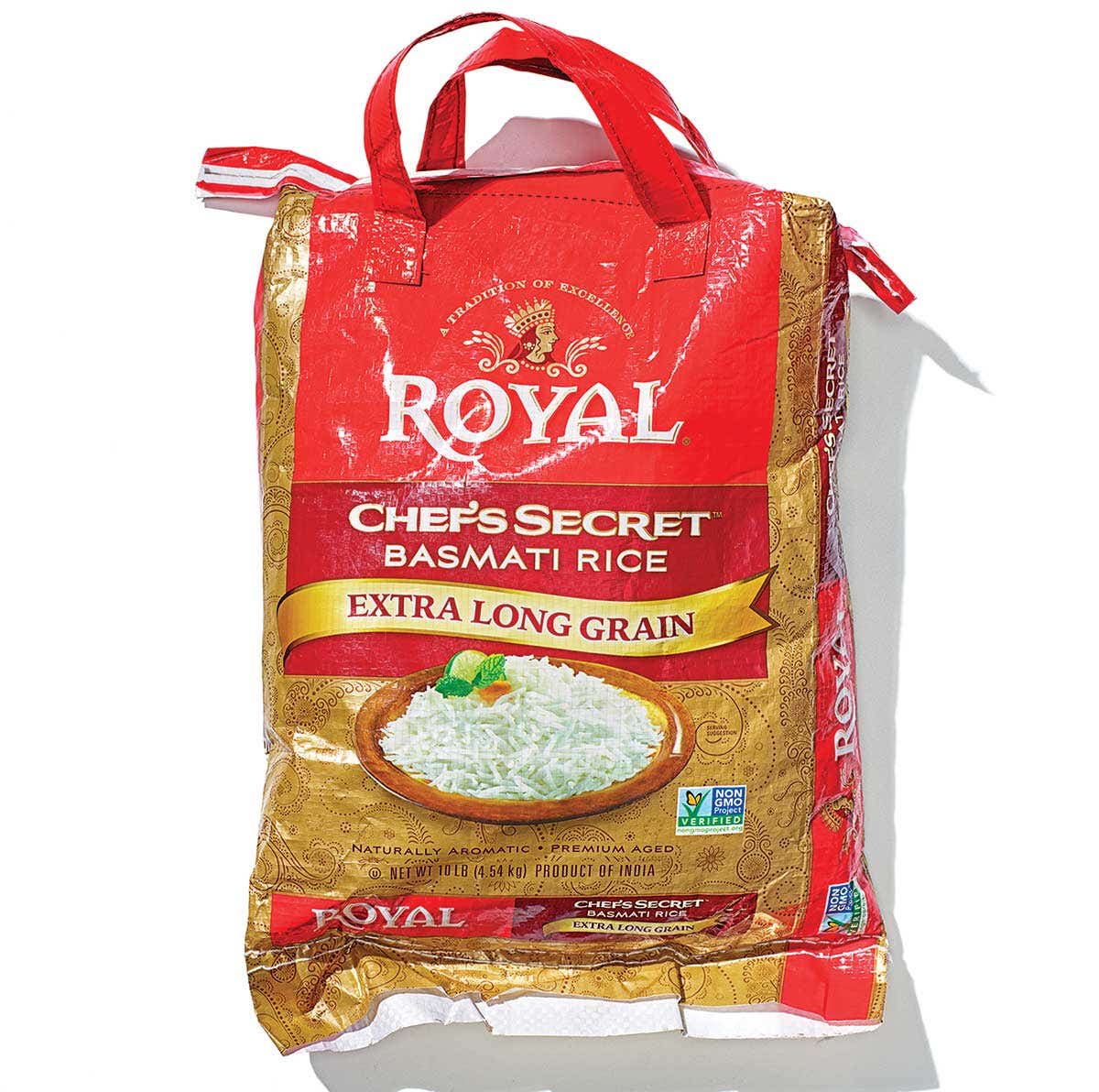
Bake this tahcheen, a saffron rice with chicken, in a clear glass baking dish so you can check on the crisping of the rice’s bottom layer. Get the recipe for Baked Saffron Yogurt Rice with Chicken (Tahcheen-e Morgh) »
The word tahcheen translates to "arranged on the bottom." In this version, pieces of juicy saffron chicken are arranged between layers of a thick yogurt-and-egg rice. It adds a pleasant tanginess, and forms a tahdig that's denser and less crunchy but just as satisfying. Tahcheen can be prepared in a pot on the stove, but I prefer to bake it in a glass dish so I can spy on the tahdig's progress as it cooks.
Serve a Side of Herbs
Sabzi khordan—a platter of fresh herbs, alliums, and radishes—makes a regular appearance at the Persian table. The assortment brightens and lightens a meal, while also aiding in the digestion of rich main dishes. Nibble on it between bites of buttery rice.
Polo is a word for mixed rice dishes that might be steamed with legumes and dried fruits (as in adas polo below), or complemented with herbs (sabzi polo), meat, vegetables, or, in this case, whole fish. Sabzi polo is served commonly for Nowruz, the Persian New Year. Traditionally, the fish is served alongside herbed rice—the fish symbolizes life, and the herbs symbolize rebirth.
Adas polo means "lentil rice." It is a humble, comforting mix that includes golden onions, lentils, and plump dried fruits such as raisins and dates—commonly used to balance the cuisine's tart dishes with a touch of sweetness. You can serve adas polo with a dollop of plain yogurt, or, like me, with more dried fruit.
Bloom Your Saffron
The Iranian tradition is to bring a small amount of water to a boil, let it sit for a few minutes, then pour it over ground saffron to bring out its flavors and color. (Still-boiling water is said to kill the delicate spice's "soul.") Stir the mixture, cover it, and let it steep for 5 minutes. Then add the liquid and saffron particles to the dish as needed.
Soak the Rice
Soaking the rice in salted water softens it without activating the starch, allowing the grains to remain separate, intact, and fluffy in the finished dish. Some brands require a longer soak and take longer to soften in the initial boiling phase—part of the minutiae of Persian rice-making. Trial-and-error is the best method: Familiarize yourself with the brand of rice available to you, and start with 1 hour of soaking on average.
Know Your Pot and Stove
The "art" of tahdig-making comes into play here. No two tahdigs will ever turn out the same. But to get as close to consistent as possible, start with a heavy-duty nonstick pot with a flat bottom and straight sides. Take notes each time you make a tahdig, cross your fingers, and be confident in your flip. Beyond that, just hope that luck is with you.
A Floral Finish
The use of roses—petals and waters flavored with them—is common in Persian and Middle Eastern kitchens. Naz sprinkles the petals atop this tart, cooling yogurt sauce she serves with crispy rice dishes, and often with stews and meats. Get the recipe for Yogurt Cucumber Sauce with Rose Petals (Maast-o Khiar) »
Keep Reading
Continue to Next Story
